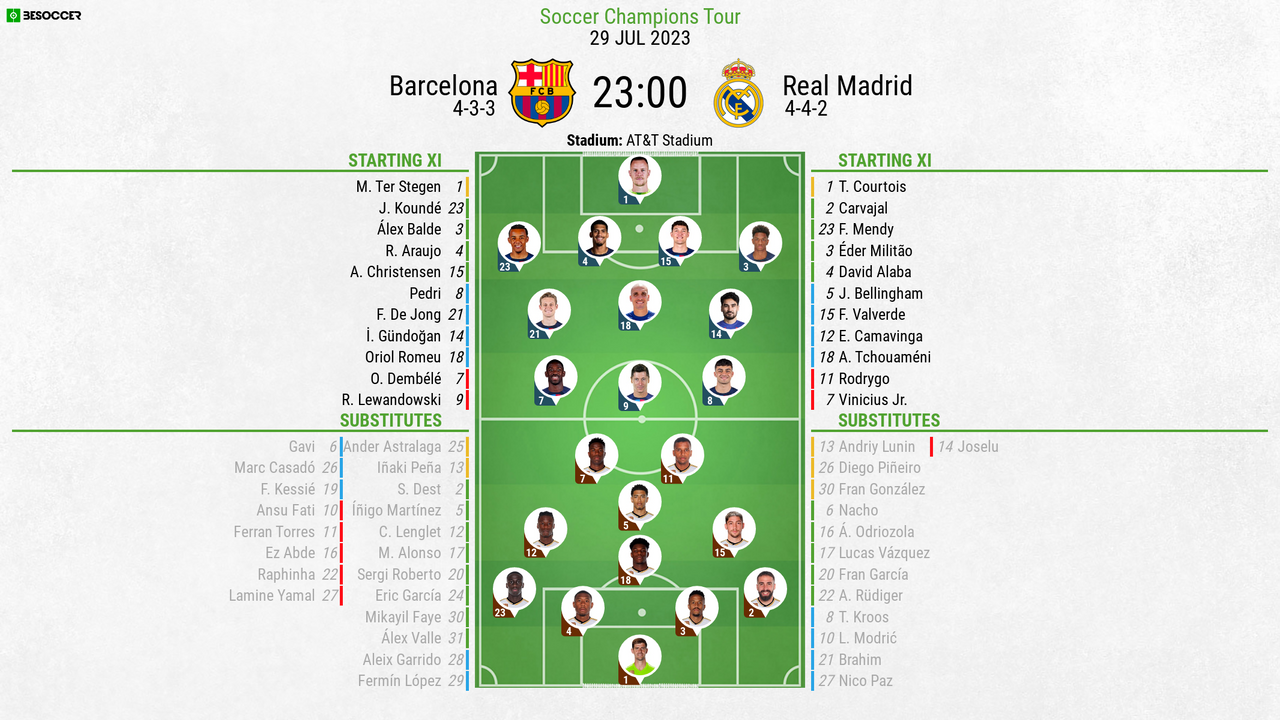
The Architect’s Blueprint: How to Create Football Tactics Grounded in Facts
Football, often dubbed "the beautiful game," is far more than just 22 players chasing a ball. Beneath the surface of individual brilliance and passionate performances lies a meticulously crafted strategic framework: tactics. For the uninitiated, tactics might seem like abstract concepts, but for coaches and analysts, they are the very DNA of a team’s performance. Creating effective football tactics is an intricate blend of art and science, demanding deep understanding, rigorous analysis, and an unwavering commitment to facts. This article will delve into the multifaceted process of designing football tactics, emphasizing the data-driven and analytical approaches that transform intuition into actionable strategy.
I. The Foundational Philosophy: A Coach’s Identity
Before drawing up formations or devising intricate passing routines, every tactical approach begins with a core philosophy. This is the coach’s identity, their preferred style of play, and the non-negotiable principles that will guide every decision. Is the coach committed to possession-based football, controlling the tempo and suffocating opponents with intricate passing patterns (e.g., Pep Guardiola’s tiki-taka)? Or do they favor a high-intensity pressing game, winning the ball back quickly in advanced areas (e.g., Jürgen Klopp’s Gegenpressing)? Perhaps a pragmatic counter-attacking approach, absorbing pressure and exploiting space on the break (e.g., Diego Simeone’s Atlético Madrid)?
This philosophy isn’t just a preference; it’s the lens through which all tactical facts will be interpreted. It dictates the type of players recruited, the training methodologies, and the overall team culture. Without a clear philosophical foundation, tactical decisions can become disjointed and contradictory, leading to a team without a discernible identity.
II. The Deep Dive: Knowing Your Own Team (Facts & Analysis)
The most crucial factual starting point is an exhaustive understanding of your own squad. This goes beyond knowing names and positions; it requires a granular analysis of each player’s profile:
-
Individual Player Attributes:
- Physical: Speed, stamina, strength, agility, aerial ability. Data points like sprint distance, top speed, and distance covered are invaluable here.
- Technical: Passing range and accuracy, dribbling ability, shooting prowess, first touch, crossing quality, defensive tackling technique. Passing completion rates, successful dribbles, and shot accuracy are key metrics.
- Mental: Decision-making under pressure, composure, resilience, leadership, tactical intelligence, concentration, work rate. While harder to quantify, observation and psychological assessments are vital.
- Preferred Foot & Role Versatility: Can a player operate effectively in multiple positions or on both flanks? This offers tactical flexibility.
-
Squad Balance & Depth:
- Are there multiple options for each position, ensuring cover for injuries or dips in form?
- Is there a good mix of experienced veterans and promising youth?
- Do the players complement each other? For instance, a creative midfielder needs a defensive shield, or an attacking full-back needs cover from his winger.
-
Team Chemistry & Dynamics:
- While less quantifiable, understanding player relationships, communication styles, and leadership structures within the squad is crucial. A tactically sound plan can crumble if the team lacks cohesion off the pitch.
III. The Opponent’s Dossier: Dissecting the Adversary (Facts & Analysis)
Effective tactics are reactive as well as proactive. A significant portion of tactical planning involves dissecting the opposition. This requires meticulous scouting and data analysis:
-
Formation & Personnel:
- What is their most common formation (e.g., 4-3-3, 3-5-2, 4-2-3-1)?
- Who are their key players (playmakers, goal-scorers, defensive lynchpins)?
- Are there any recurring personnel changes or tactical variations they employ?
-
Attacking Principles:
- How do they build up play from the back (short passes, long balls)?
- Where do they typically create overloads? (e.g., wide areas, central channels).
- What are their primary methods of penetrating the final third (through balls, crosses, individual dribbling)?
- Which players are their main goal threats, and from where do they typically score (inside the box, long shots, set pieces)? Expected Goals (xG) data for individual players and team patterns is highly informative here.
-
Defensive Principles:
- Do they press high, mid-block, or sit deep (low block)?
- What is their defensive shape when out of possession?
- How do they defend set pieces (man-marking, zonal marking, hybrid)?
- Are there specific areas of weakness they concede chances from (e.g., slow centre-backs susceptible to pace, full-backs caught high up the pitch)? Expected Goals Against (xGA) can highlight defensive vulnerabilities.
-
Transition Phases:
- How quickly do they transition from defense to attack (counter-attacking speed)?
- How quickly do they transition from attack to defense (counter-pressing intensity, recovery runs)?
-
Set Pieces:
- What are their common attacking set-piece routines (corners, free-kicks)?
- Who are their primary takers and targets?
- How do they defend set pieces?
Video analysis software, scout reports, and statistical platforms are indispensable tools for gathering these facts. Heatmaps, passing networks, and action maps provide visual insights into player movement and team shape.
IV. The Game Context: External Factors
Beyond the teams themselves, external factors can significantly influence tactical decisions:
- Venue: Home advantage (crowd support, familiarity with pitch) vs. away challenge.
- Competition & Stakes: A league match early in the season might call for different tactics than a cup final or a crucial relegation decider.
- Weather & Pitch Condition: Wet, windy conditions or a heavy pitch can impact passing quality, speed of play, and player stamina, necessitating adjustments.
- Referee: Understanding a referee’s tendencies (e.g., lenient or strict on fouls, quick to issue cards) can subtly influence tactical instructions, particularly regarding aggression and pressing intensity.
V. Building the Tactical Blueprint: From Formation to Principles
The formation (e.g., 4-3-3, 3-5-2) is merely the starting point – the skeleton. The true tactical blueprint is fleshed out by defining the principles of play within that formation across different phases:
-
Attacking Principles (In Possession):
- Build-up Play: How do you play out from the back? Short passes from the goalkeeper, long balls to target man, or a mix? What are the roles of the defenders and central midfielders in initiating attacks?
- Progression through Midfield: How do you move the ball from your defensive third to the attacking third? Through central overloads, wide rotations, or quick transitions?
- Final Third Penetration: How do you create goal-scoring opportunities? Overlapping full-backs, inverted wingers cutting inside, central striker movement, through balls, crosses?
- Movement Off the Ball: Creating space, decoy runs, supporting runs, rotations.
- Overloads: How do you create numerical advantages in specific areas of the pitch?
-
Defensive Principles (Out of Possession):
- Pressing Strategy: When and where do you initiate pressure? High press (in the opponent’s half), mid-block (around the halfway line), or low block (deep in your own half)?
- Defensive Shape & Compactness: How do players position themselves to deny space and passing lanes? Maintaining vertical and horizontal compactness.
- Marking Schemes: Man-marking (individual responsibility), zonal marking (responsibility for an area), or a hybrid approach.
- Counter-Pressing: Immediate pressure on the opponent after losing possession to win the ball back quickly or prevent a counter-attack.
-
Transition Principles:
- Offensive Transition (Defense to Attack): How quickly do you react after winning the ball? Immediate counter-attack, or consolidate possession? What are the roles of players breaking forward?
- Defensive Transition (Attack to Defense): How quickly do you react after losing the ball? Immediate pressure on the ball carrier, recovery runs, regaining defensive shape.
-
Set Pieces:
- Attacking Set Pieces: Pre-rehearsed routines for corners and free-kicks to create goal-scoring opportunities. Who takes them, who makes specific runs, who provides defensive cover?
- Defensive Set Pieces: Clear marking assignments and responsibilities to prevent goals from corners and free-kicks.
VI. Data-Driven Decision Making & Validation
In modern football, data is not just a supplement; it’s an integral part of tactical creation and validation.
- Performance Metrics: Beyond traditional stats, advanced metrics like Expected Goals (xG), Expected Assists (xA), Passes Per Defensive Action (PPDA), packing statistics, and various duel success rates provide deeper insights.
- Player Tracking Data: GPS data offers insights into player movement, work rate, and spatial awareness. Heatmaps, sprint intensity, and distance covered can inform fitness management and tactical deployment.
- Video Analysis Platforms: Tools that allow coaches to tag specific events (e.g., successful presses, turnovers in dangerous areas, defensive errors) and create highlight reels for individual players or team units.
- Pattern Recognition: Data helps identify recurring patterns in both your team’s and the opponent’s play. Are you consistently losing the ball in a certain area? Is the opponent always attacking down one flank?
These facts allow coaches to objectively assess if their tactical principles are being executed effectively and to identify areas for improvement. They can validate or challenge intuitions, leading to more informed adjustments.
VII. Implementation: Training & Communication
A brilliant tactical plan on paper is useless if it cannot be implemented on the pitch.
- Training Ground Repetition: Tactical concepts must be drilled repeatedly through specific exercises, small-sided games, and tactical walk-throughs. Players need to understand their roles and responsibilities intuitively.
- Video Debriefs: Using video analysis to show players both successful execution and areas for improvement.
- Clear Communication: The coach must articulate the tactical plan clearly and concisely to the players. This involves pre-match team talks, individual player meetings, and in-game instructions. Player buy-in is paramount; they must understand why a certain tactic is being employed.
VIII. Adaptability & In-Game Management
No tactical plan is foolproof. The dynamic nature of football demands constant adaptation.
- Reading the Game: A coach must be able to assess the unfolding match in real-time, identifying if the initial tactical plan is working, if the opponent has made adjustments, or if individual errors are disrupting play.
- In-Game Adjustments: This might involve changing the team’s shape, altering pressing intensity, switching player positions, or making substitutions.
- Substitutions: Not just replacing a tired player, but a tactical move to change the game’s dynamic, exploit an opponent’s weakness, or shore up a struggling area.
Conclusion: The Art & Science of Tactical Mastery
Creating football tactics is an ongoing, iterative process. It begins with a clear philosophical vision, grounded in a meticulous factual analysis of both your own team and the opposition. It requires a deep understanding of the game’s different phases, the ability to translate complex ideas into actionable training drills, and the flexibility to adapt in the heat of battle.
In an increasingly data-rich sport, the most successful tactical minds are those who can blend the art of intuition and leadership with the science of objective data analysis. They don’t just guess; they deduce. They don’t just instruct; they explain. And in doing so, they transform a collection of talented individuals into a cohesive, strategically superior unit capable of achieving greatness on the pitch. The facts don’t just inform the tactics; they are the very bedrock upon which tactical mastery is built.



